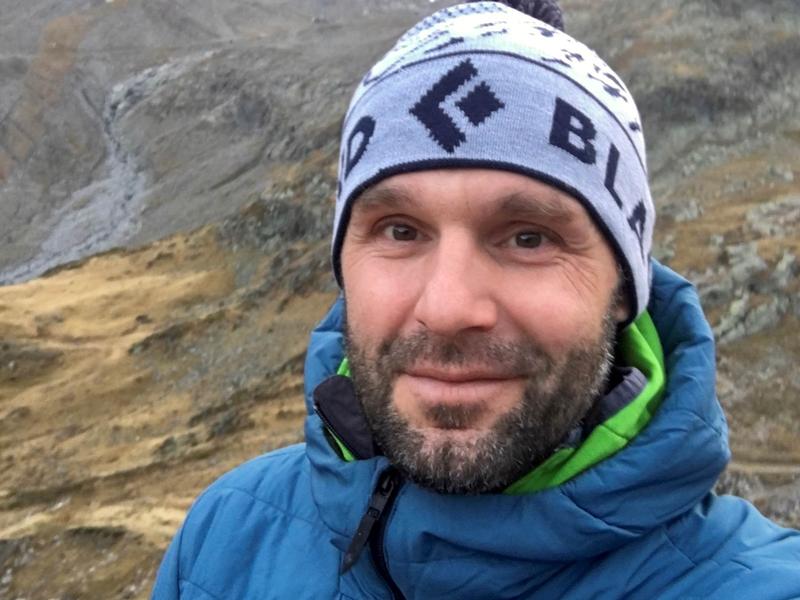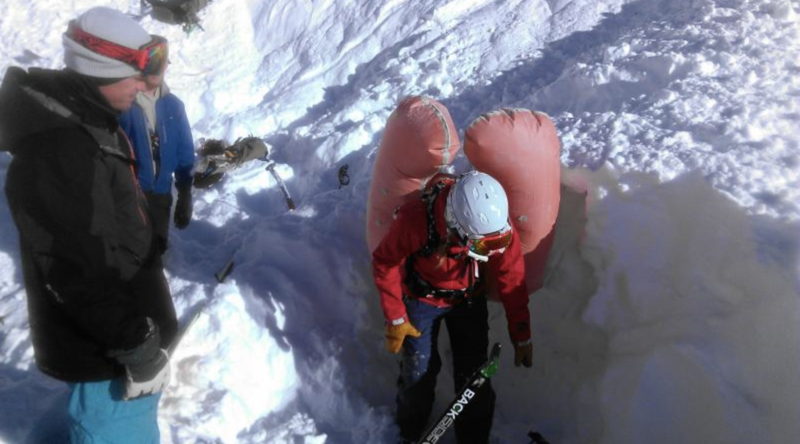Ben Bombard
In this episode, we sit down with Dr. Scott McIntosh and Black Diamond's Andy Merriman to talk about, well first, good decision making, but then, in the event you get caught in an avalanche, how and why an airbag can potentially help you avoid the worst consequences. In particular, we're taking about BD's innovative JetForce Pro Avalanche Airbag. A study conducted by Dr. McIntosh et al. suggests the JetForce Pro pack could significantly delay asphyxia, buying buried backcountry users valuable additional time for rescue.

Scott McIntosh is a physician in the emergency department as well as a professor on faculty at the University of Utah. He's the director of Wilderness Medicine Fellowship, the medical director for Summit County EMS, a flight physician and associate medical director of AirMed, and a physician member on Snowbird Ski Patrol. He has published numerous research papers on mountain and wilderness medicine.

Andy Merriman is the Business Unit Director of Backcountry Ski and Snowboard at Black Diamond Equipment in Salt Lake City, Utah. Andy is a long time backcountry skier and alpinist and loves spending time with his wife and kids in the mountains.
Avalanches are a primary safety concern for those who travel in winter backcountry terrain. If not killed by traumatic injury (roughly a third of victims are killed by trauma in the US), most buried avalanche victims can survive for 15-20 minutes before asphyxiation occurs. From 20 to 35 minutes after burial, the rate of survival sharply declines from approximately 90%to 35%.
More and more backcountry skiers and riders choose to recreate with an avalanche airbag; however approximately 20% of avalanche victims who have successfully deployed an avalanche airbag still become critically buried. Two of the more widely known examples of this in Utah are from a live recovery in the Grizzly Gulch terrain trap in December 2013 and a fatality near Bountiful Peak in January 2020.
Active Deflation Creates an Air pocket
One avalanche airbag, (Black Diamond's JetForce Pro), actively deflates three minutes after deployment by reversing the fan mechanism, thereby removing air that has entered the airbag during the inflation phase. Active deflation is intended to create an air pocket in the snow in the event of a critical burial, which could delay asphyxiation and allow more time for rescue and ultimately increase chances of survival. The Black Diamond JetForce airbag is unique among avalanche airbags in regards to this feature.
In a study conducted in March and April 2019 by McIntosh, Little, Seibert, Polukoff, and Grissom, twelve volunteers took turns being "critically buried" (buried 130cm) with an inflated Black Diamond JefForce Pro avalanche airbag. After three minutes, the Jet Force actively deflated as intended, creating an air pocket. The participants' vital signs were observed and recorded for 60 minutes.
Eleven out of twelve participants remained within normal physiological range at the end of the 60 minute burial. (One participant required extrication at 48 minutes due to increased heart rate, end tidal carbon dioxide rate, and anxiety.)
While the study concludes that the air pocket would improve survival chances in avalanche accidents in the proper conditions, the exact survival benefit is unknown. Complicating factors include the following: the mouth, nose, or upper airway are obstructed by snow or debris, traumatic injury to the victim, or when an unconscious victim is unable to tilt their head to access the new air pocket. Other complications include a failure to activate the airbag handle while carried in an avalanche and the possibility that the inflated airbag becomes punctured during the event.
The Bottom Line
The bottom line is that the best chances of surviving an avalanche is to not be caught in one at all. Proper education, training and terrain selection can help avoid being caught in an avalanche. Avalanche airbags have been known to decrease mortality from 22% to 11%. If completely buried, however, the avalanche victim's partners must effect a companion rescue to prevent asphyxiation.
This study offers some data that supports the idea that an actively deflated airbag may delay asphyxiation and improve survival.







